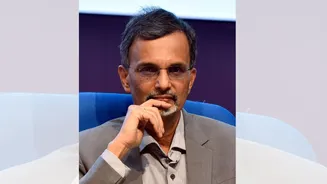India is expected to maintain potential real GDP (Gross Domestic Product) growth of 6.5 per cent year-on-year in FY28-30E, making it the world’s third-largest consumer market in 2026E and third-largest economy
by 2028E (after the US and China), according to UBS Global Research.
UBS Chief India Economist Tanvee Gupta Jain notes that recent policy initiatives, including simplification, a focus on deregulation, and an infrastructure push, are good next steps, but emphasizes India needs further strengthening of structural reforms, especially in land, capital, and increased R&D spending, in order for “new economy” sectors to gain share.
India’s real GDP growth to stabilise toward the trend, at 6.4% YoY in FY27E (10bps below consensus) and 6.5% in FY28E, on supportive policy and strong domestic demand, Jain adds.
Amid rising global uncertainty, UBS Chief economist expects India’s macro stability risks to remain largely contained in FY27:
1) We estimate headline CPI inflation picks up from 2.4% YoY in FY26 to 4.3% YoY in FY27 (largely on a base effect), albeit below the RBI’s 4.5% forecast.
2) India’s external position to remain robust with the current account (CA) deficit estimated at 1.2% of GDP in FY27, well within the comfort level.
3) We think the fiscal deficit will remain on a consolidation path, but at a slower pace. We see space for one more 25bp rate cut in rest of FY26E before a long pause in FY27E.
However, the report highlights both upside and downside risks. If the 50% trade tariff persists, India’s growth could fall by about 50 basis points in FY27. A 25% tax on payments by US firms to offshore service providers could further dent growth by 90bps. On the upside, faster adoption of artificial intelligence (AI) could enhance productivity and lift growth by 20bps, while accelerated structural reforms could push GDP growth towards 6.5–7%.














